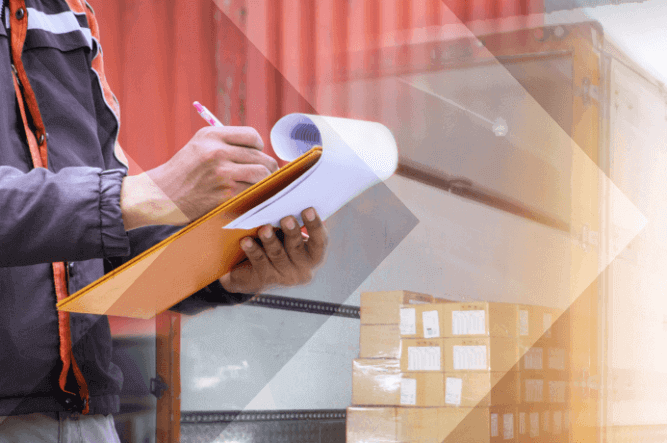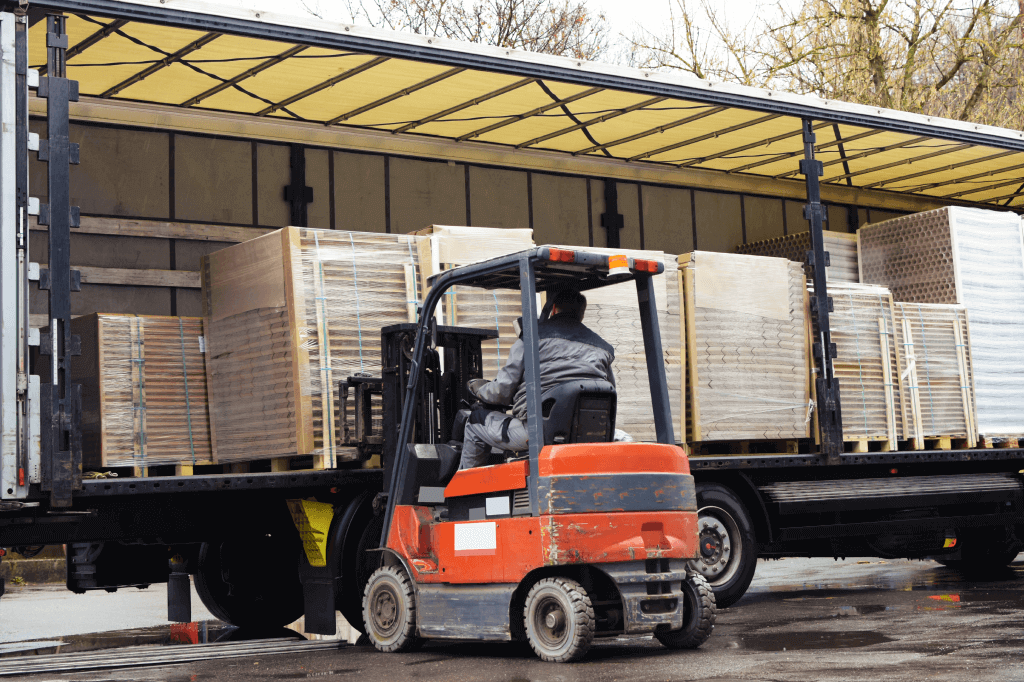FTL Shipping: A Complete Guide for Shippers

Ship your freight faster.
Move your freight right now. Thousands of trustworthy trucking partners are waiting.
When shipping freight, you want to work with high-quality carriers who offer reasonable rates and deliver your goods safely and on time. But how you send your cargo has a significant impact on when it arrives and the rates you’ll pay. Whether you use full truckload (FTL) shipping or less than truckload (LTL) shipping makes a difference.
In this article, we’ll answer all your questions about FTL shipping, including:
- What is FTL shipping?
- What’s the difference between FTL vs. LTL?
- The benefits and drawbacks of FTL freight shipping
- When to use FTL shipping
- When not to use FTL shipping
- What factors impact FTL rates?
- How to find the best FTL rates
We’ll also give you a few tips to streamline your shipping operations.
What is full truckload (FTL) shipping?
What is FTL freight? Full truckload (FTL) shipping is used for shipments that take up an entire truck (or nearly an entire truck). Shippers using FTL get exclusive use of the whole truck. You won’t share space with anyone else even if you don’t fill it completely.
By committing to an FTL load, your cargo will not mix with other products from other shippers. Since FTL freight takes up an entire truck, there won’t be extra stops on the way to offload other shippers’ products. This reduces handling and the likelihood of damage.
It is usually the most cost-efficient way to ship goods if you have enough freight to contract for an FTL load.
FTL vs. LTL shipping: What’s the difference?
FTL shipping and less than truckload (LTL) shipping are the two most common ways cargo is transported.
While FTL takes up an entire truckload, LTL freight shipping does not. With LTL shipping, you share space with other shippers and share transportation costs. With LTL, your portion of the freight charges is based on the amount of space your cargo uses.
LTL is a more affordable way to ship when you have smaller loads.
Here are the key differences comparing LTL vs. FTL shipping:
Dimensions
- FTL Shipping: Freight weighing more than 10,000 pounds or more than 10-12 pallets.
- LTL Shipping: Freight that weight between 150 and 15,000 pounds or up to 10-12 pallets.

Pickups
- FTL Shipping: Typically includes fixed appointment times for pick up at the shipper’s distribution point.
- LTL Shipping: Typically, pickups within a window since carriers are picking up from multiple locations.
Costs
- FTL Shipping: FTL shipping rates are most cost-effective when shipping large amounts of freight.
- LTL Shipping: LTL shipping rates are most cost-effective when shipping smaller amounts of freight.
Handling
- FTL Shipping: Minimal handling as freight is loaded at the pickup point, sealed in the trailer, and only unload at the destination.
- LTL Shipping: Freight is often loaded and unloaded multiple times during the shipping process.
Shipping times
- FTL Shipping: Faster delivery times as drivers go from pickup to destination directly.
- LTL Shipping: Has longer transit times as freight is loaded and unloaded at warehouses, distribution centers, or onto different trucks.
The benefits of FTL shipping
If you have enough volume to ship full truckloads, it’s the best solution to transport large shipments, especially when you have tight delivery schedules.
Faster shipping times and time-sensitive shipments
When you need something to arrive fast, FTL shipping takes the most direct route. LTL shipments often change hands multiple times or stop at multiple locations. This adds to the time and also requires more flexibility in scheduling. Fewer stops also mean fewer opportunities for delays.
Reduced handling means reduced risk for damage
Depending on what’s in an LTL shipment, cargo may have to be moved around to get to other shippers’ goods or offloaded to warehouse or distribution points and then loaded onto other trucks for last-mile delivery. This may also be an important consideration for fragile goods.
Improved security
With FTL, you typically fill up the truck, seal it up, and it’s not reopened until it arrives at its destination. Only the people directly associated with your shipment touch it.
Savings on larger shipments
The bigger the shipment, the more efficient it is to use FTL freight. Assuming other factors are the same, it is less expensive to transport the same volume rather than split your shipments into smaller LTL loads.
Fewer weight or size restrictions
With FTL shipping, you don’t have to squeeze your loads into available space to maximize shipping costs. Because you are using the entire truck, there are fewer restrictions on size and weight. FTL cargo weight and size are only restricted by state regulations.
Volume pricing
If you ship enough FTL loads, you can usually get volume pricing for carriers. When they can depend on consistent business, you can often get better rates.
Drawbacks of FTL shipping
There are not a lot of drawbacks to FTL shipping, meaning if you have enough freight to fill a truck, it’s the best solution. The biggest disadvantage comes when you don’t have enough goods to fill trucks, which leads to using LTL freight instead. It doesn’t make sense to pay for an entire truck when you only need to ship a few pallets or fill up half a truck.
Other considerations include:
Fixed delivery schedules
Carriers want to keep their trucks and drivers as busy as possible, so they may have fixed delivery schedules that allow them to drop off one load and pick up a return one. With FTL, you may need to work around these fixed schedules. This may not be an issue for in-state or shorter routes, but might be an issue for cross-country shipping schedules.
Availability
Many carriers contract with large shippers, which can tie up their fleets and reduce availability. Because FTL drivers set their own price, define shipping lanes, and control their availability, it can be harder to find available drivers. This is especially true with today’s driver shortage. But you can always find brokers and carriers to handle your loads by using the Truckstop Load Board for Shippers.

When to use FTL freight shipping
When should you use FTL freight shipping? We’ve covered many basics when discussing the pros and cons of FTL freight, so let’s talk about specific scenarios.
Large shipments
If you are shipping more than 10-12 pallets or have a total weight exceeding 10,000 pounds, LTL freight is likely your most cost-effective delivery method.
Hitting specific delivery windows
When you need to deliver your goods within a fixed time window, you can improve your on-time pickup (OTP) and on-time delivery (OTD) by choosing FTL transport. With fewer stops, there is less chance of missing delivery windows.
Shipping perishable goods
Shipping perishable goods is also an excellent reason to use FTL shipments. It provides the fastest delivery times with minimal disruptions.
Shipping expensive or fragile goods
Because there’s less handling involved with FTL cargo, you’re less likely to damage items by moving them around to accommodate other goods or loading and unloading them multiple times. An FTL shipper can place goods strategically inside trucks to ensure they reach their final destination undamaged.
When to not use FTL freight shipping
If you have smaller loads or can’t fill an entire truck, you might be better offer to swap LTL for FLT to reduce your costs. For example, if you are shipping less than 10 pallets or the total weight is less than 15,000 pounds, LTL may be a better option for you.
You may also want to compare rates if you have more flexibility in your schedule. If you have wiggle room in your delivery times, it’s worth seeing the price breakdowns. Keep in mind that it can vary greatly depending on full capacity and demand.
You can always check competitive rates on with Rate Insights.
What factors impact FTL freight rates?
Factors that impact FTL freight rates include:
- Mileage. Not all lanes cost the same, even if the mileage is identical. Longer distances cost more due to increased truck wear and tear, driver time, and fuel.
- Fuel surcharges. Fuel charges are based on the current market price for diesel fuel. It’s common for these rates to adjust weekly when prices change.
- Truck to freight ratio. Locations with higher freight volume than drivers, such as less popular lanes, may increase costs.
- Market capacity. Supply and demand always play a role in rates, as does seasonality.
- Freight classification. Freight class is based on density, stowability, handling, and liability.
- Delivery destinations. Shipping along established lanes to major hubs, such as a distribution center or warehouse, will cost less than making rural deliveries.
- Deadhead miles. Having to drive an empty truck from delivery to a new pickup will also impact pricing since carriers have to bear the cost of empty miles.
Tips for FTL freight shippers
The best way to find top rates is to use a dedicated load board for shippers. Truckstop allows you to do unlimited searches and uncover hidden capacity. You can also post unlimited loads, allowing carriers to respond to rates or book loads.
The Truckstop Load Board also provides tools to help you make better decisions, such as market outlooks for capacity, load-to-truck ratios, and load densities.
Regardless of where you find carriers, you always want to work with qualified FTL carriers. You’ll want to make sure any carrier you work with has a good safety rating and carries the amount of insurance you need.
Building a list of high-quality and trusted FTL carriers is a good idea. RMIS carrier onboarding gives you automatic access to more than 98% of all active carriers in the US and Canada. This can significantly reduce your onboarding time by 80% vs. manual processes. You should also monitor safety records to make sure you’re aware of carrier insurance changes, which can occur at any time.
Working with experienced FTL load brokers can make booking loads simpler as well. You can hire brokers to help handle all the sourcing, vetting, and ongoing compliance monitoring.
Get the best shipping rates on FTL loads
With the Truckstop Load Board for Shippers, you can find thousands of trustworthy trucking partners to move your freight. And with Rate Insights, you can see accurate rates by equipment types, rate trends, and rate levels to price your shipments with confidence.
Get a demo to get started.
Get helpful content delivered to your inbox.
Sign up today.
Find high-quality loads fast, get higher rates on every haul, and access tools that make your job easier at every turn.






